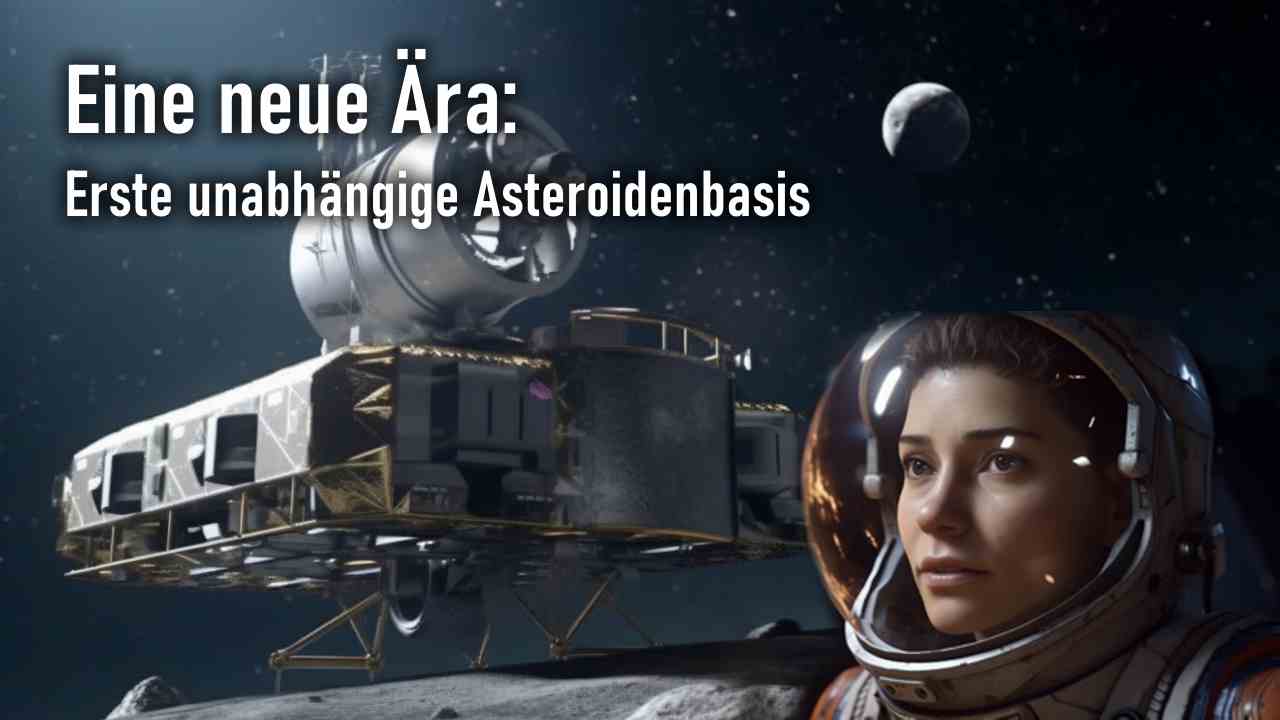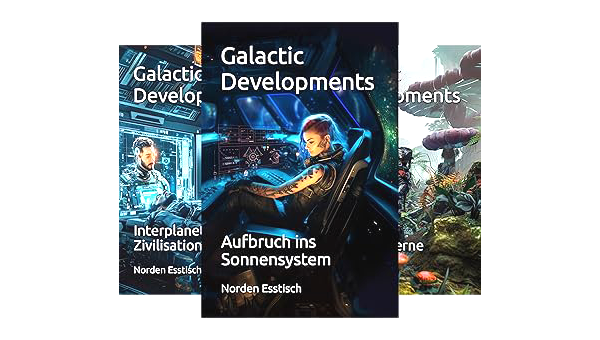
2179 Die erste wirtschaftlich unabhängige Asteroidenbasis

Im Jahr 2179 läutet die Gründung der Stella Servizio Stazione, der ersten wirtschaftlich unabhängigen Asteroidenbasis, eine neue Ära der Entwicklung im Weltraum ein. Bis zu diesem Zeitpunkt wurden die meisten Aktivitäten außerhalb des Erde-Mond-Systems von staatlichen Raumfahrtagenturen finanziert. Der Schwerpunkt lag dabei weitgehend auf wissenschaftlicher Forschung.
Im frühen 22. Jahrhundert beginnen staatliche Agenturen und staatlich geförderte Privatunternehmen, die Gewinnung von Ressourcen aus Asteroiden zu untersuchen. Wichtige Meilensteine sind der Start mehrerer Asteroiden-Erkundungsmissionen Mitte der 20-er Jahre und die Einrichtung der ersten Asteroiden-Abbaustation im Jahr 2148.
Neben dem Mineralabbau und der Prospektion laufen im Asteroidengürtel viele Forschungsprojekte. Dazu gehören Forschungen zur Planetenbildung und zur Entwicklung des Sonnensystems, unzählige Erkundungsmissionen mit automatischen Sonden und der Bau einiger sehr großer wissenschaftlicher Instrumente. Vom Ceres Optischen Interferometer Teleskop und vom Ultra-Long Baseline Gravitationswellendetektor werden bahnbrechende Fortschritte erwartet. Ersteres nutzt Asteroiden, um sehr empfindlichen optischen Teleskope vor Sonnenlicht zu schützen, während es die Distanz zwischen den Einzelteleskopen über Million Kilometer auf wenige Nanometer stabil hält. Letzteres bereitet den Bau eines Gravitationswellendetektors mit einer gigantischen Armlänge von 400 Millionen Kilometern vor.
Um das Jahr 2155 nehmen die ersten kommerziellen Asteroidenschieber den Betrieb auf, eine bahnbrechende Entwicklung. Erstmals in der Menschheitsgeschichte ermöglicht es die Technologie, Umlaufbahnen größerer Asteroiden im Bereich von 100 Metern so zu verändern, dass diese ressourcenreichen Himmelskörper der Erde auf ihrem Orbit näherkommen. Diese Entwicklung reduziert drastisch Aufwand und Kosten beim Asteroidenabbau.
Trotzdem bleibt Ressourcenabbau auf Asteroiden in minimaler Gravitation eine große Herausforderung. Viele Asteroiden – insbesondere die leicht abbaubaren – sind sogenannte Rubble-Piles (Schutthaufen). Einerseits macht die niedrige Schwerkraft den Abbau einigermaßen einfach. Bei Rubble-Piles muss man nur das lose Material durchsuchen, um die wertvollen Ressourcen zu finden und einzusammeln. Trotzdem ist der Asteroidenabbau sehr gefährlich. Menschen und Geräte sind ständig in Gefahr, denn Rubble-Pile-Asteroiden sind im Wesentlichen lose Ansammlungen von Felsen, Kieseln und Staub, die durch die Schwerkraft und schwache Kräfte zwischen den Teilchen zusammengehalten werden. Durch Gezeitenkräfte, thermische Expansion und Stoßwellen können sich Teile verschieben, plötzliche Erdrutsche auslösen oder gefährliche Staubwolken erzeugen, die Geräte und Personal einhüllen können. Obwohl sich die meisten Bewegungen in niedriger Gravitation langsam abspielen, kann die enorme Masse der Felsen Geräte beschädigen und für das Personal zur tödlichen Bedrohung werden. Um diesen Gefahren zu begegnen, werden strenge Sicherheitsvorkehrungen und Verfahren eingeführt. Diese Maßnahmen werden kontinuierlich aktualisiert, basierend auf neuen Erkenntnissen der Besatzungen und auf neuen Technologien, mit denen sich das Wissen über das Verhalten von Rubble-Pile-Asteroiden ständig vergrößert.
Die Mitte des 22. Jahrhunderts steigt der interplanetare Verkehr in das mittlere Sonnensystem deutlich an. Die Entwicklung wird begünstigt durch die Verfügbarkeit von lunaren Ressourcen, die Schiffsbau im Orbit und größere Mars-Siedlungsprojekte ermöglichen. Ein wesentlicher Teil des neuen Verkehrs kommt von den Asteroidenschiebern. Aber auch der Umfang wissenschaftlicher Missionen zum Asteroidengürtel und darüber hinaus nimmt weiter zu.
Die Stella Servizio Stazione wird gegründet, um all diese Aktivitäten zu unterstützen. Strategisch günstig im Asteroidengürtel gelegen, bietet die Station ein umfassendes Dienstleistungsspektrum. Neben der Bereitstellung von Treibstoffen für interplanetare Reisen und Transporte, bietet sie Einrichtungen für die Verarbeitung von Ressourcen und Wartungsdienste für Schiffe und Geräte. Auch der menschliche Faktor wird nicht vernachlässigt. Neben den technischen Diensten bietet die Basis auch Einrichtungen für Ruhe und Erholung, Freizeit und Unterhaltung speziell für Schiffsbesatzungen und Asteroidenbergleute, die längere Zeit im All verbringen. Entscheidend für den Erfolg der Stella Servizio Stazione ist eine fortschrittliche Ressourcennutzung vor Ort (in-situ). Die Basis erhält ihre Rohstoffe für Treibstoff und Material von nahegelegenen Asteroiden.
Die Stella Servizio Stazione verwendet ein ausgeklügeltes Flugzeit-Betankungssystem, um Schiffe zu versorgen, ohne dass diese abbremsen müssen: den "Materiestrom" (Matter Stream). Der Materiestrom besteht aus einem Netzwerk von Transmittern, die Treibstoffpellets zu schnell reisenden Schiffen senden. Die Schiffe sind mit den entsprechenden Empfängern ausgestattet. Die Empfänger kommunizieren ständig mit den Transmittern, um ihre relativen Positionen zu aktualisieren. Diese präzise Echtzeit-Zielverfolgung ist eine technische Meisterleistung, die es Schiffen ermöglicht, im Flug zu betanken und so die Reisezeiten deutlich zu reduzieren.
Stella Servizio Stazione wird gegründet von Vincenza Boccaccia, einer ehemaligen Asteroidenschieberin. Ihre frühe Investition in orbitale Ressourcenextraktion und Produktion machte sie zur Billionärin. Boccaccia ist eine praxisorientierte Managerin. Sie überwacht selbst den Bau der "Stazione" vor Ort. Vincenza Boccaccia wurde in einer kleinen Stadt in der Nähe von Neapel, Italien, geboren. Sie wuchs in einer Zeit auf in der nicht nur die Wirtschaft massiv expandierte, sondern auch der Umfang der Aktivitäten im erdnahen Raum, vor allem angetrieben durch den Bau der gigantischen Schattenblenden der Erde und die ersten großen rotierenden Habitate. Früh zeigte sich ihre Hochbegabung im technisch wissenschaftlichen Bereich. Sie interessierte sich für den Weltraum, begann mit 14 Jahren das Studium in den Fächern Astrophysik und 0G-Konstruktion. Mit 18 schloss sie ihre Ausbildung mit einem PhD in Space-Engineering ab. Schnell zog sie Aufmerksamkeit von großen Raumfahrtagenturen und Privatunternehmen auf sich. Durch ihre Projekte wurde sie zu einer bekannten Persönlichkeit in der Branche. Schon mit 23 wurde sie zu Keynotes auf Konferenzen eingeladen, hatte ihre eigene Beratungsfirma für Orbitalkonstruktion und bereitete sich darauf vor, ihre Aktivitäten in den Weltraum zu verlagern. Als Unternehmerin im Orbit nutzte sie ihr technisches Wissen und ihre Managementfähigkeiten, um innovative Methoden für Weltraumressourcenextraktion und Asteroidenverschiebung zu entwickeln, was ihr bedeutenden Reichtum und Einfluss einbrachte.
Aber die wahren Ziele von Vincenza Boccaccia gingen schon immer weit über das Tagesgeschäft hinaus. Als frühe Asteroidenschieberin und Pionierin in orbitaler Ressourcenextraktion und -produktion wollte sie nicht nur Geld verdienen, sondern durch ihre Unternehmungen vor allem die Besiedlung des Sonnensystems voranbringen.
Vincenza Boccaccia gründet Stella Servizio Stazione aus persönlichen Gründen, aber auch weil sie große Pläne für die Zukunft der Menschheit hat. Ein Teil von Boccaccias Antrieb stammt aus ihrem persönlichen Wunsch, sich etwas von der irdischen Zivilisation abzusetzen. Das ist ein survivalistisches Motiv, nämlich der Wunsch, sich eine Heimat jenseits der Erde zu schaffen, eine Zuflucht für den – zwar unwahrscheinlichen, aber nicht unmöglichen – Fall, dass der Heimatplanet von einer Katastrophe heimgesucht würde. Gleichzeitig engagiert sich Boccaccia aber auch für das Ziel, die Menschheit interplanetar zu etablieren. Indem sie den Asteroidengürtel zu ihrem neuen Heim macht, will sie voran gehen und für andere den Weg in das Sonnensystem ebnen. Sie sieht die Stella Servizio Stazione nicht nur als kommerzielles Unternehmen, sondern als den ersten Knoten eines Netzwerks von Stationen, das eines Tages das gesamte Sonnensystem umspannen könnte.
Trotz ihres bisherigen Erfolges und ihres großen Vermögens ist die Gründung der Stella Servizio Stazione ein Wagnis. Sie muss all ihr technisches Wissen und das ihrer besten Leute aufbieten, um die Station zu bauen und zu unterhalten. Der finanzielle Einsatz ist gewaltig. Die Kosten sind allein durch die Distanz zum Erde-Mond System ein Vielfaches höher als im erdnahen Raum. Die Entwicklung der Technologie zur Flugzeit-Betankung dauert mehr als ein Jahrzehnt, mit vielen Rückschlägen und Kostensteigerungen. Auch nach der Entwicklungs- und Prototyp-Phase gibt es keine Garantie dafür, dass potenzielle Kunden ihre Schiffe für Materiestrom-Empfänger umrüsten würden. Aber Boccaccia geht das Risiko ein, angetrieben von ihrer Vision und unter Einsatz ihres ganzen Vermögens.
Trotz der anfänglichen Skepsis und der enormen Herausforderungen zahlt sich Boccaccias Unterfangen schließlich aus. Die Stella Servizio Stazione boomt. Schon bald wird sie unverzichtbar für den interplanetaren Verkehr und Reisen jenseits des Mars. Der erfolgreiche Einsatz der Flugzeit-Materiestrom-Technologie revolutioniert die Raumfahrt. Reisen in das äußere System werden dadurch schneller und günstiger als je zuvor.
Mit der Zeit entwickelt sich die Stella Servizio Stazione zu einem blühenden Zentrum im mittleren System. Der kommerzielle Erfolg der Stella Servizio Stazione beweist das Potenzial privater kommerzieller Raumfahrtoperationen und er inspiriert andere Unternehmen, Boccaccias Beispiel zu folgen. Die Ära der staatlich geförderten Raumfahrtoperationen weicht einer neuen Zeit der Unabhängigkeit, in der Raumfahrtunternehmen ohne staatliche Subventionen auf eigenen Beinen stehen können.
Mehr Raumfahrt
2135 Sonnenschirm für die Erde
2154 Gemini
2155 Asteroiden-Mining
2158 Space Patrol
2179 Private Asteroidenbasis
2182 Ende des Venus-Terraformings
2187 Strafgefangene auf dem Mond
2199 Anschlag auf das Dubai-Kosmodrom
2222 Weltraumpiraten
2234 Am Ende des Orbits
2247 Quantensprung
2268 Raumpiraten
2307 Fraktale Antriebe
2333 Metrische Impulsverstärkung
2347 Interstellares Slowboat
2394 Sternenschwarm
2422 Jupiter-Saturn Schnellbahn
2430 Proxima Centauri
2458 Durchbruch
2466 Überlichtantrieb
2484 Flucht zu den Sternen
2497 Forschungsschiff zu den Aliens
2501 Extraplanetare Forschung
2523 Erste interstellare Siedler
2648 Abenteuerliche Reise
2747 Raumrennen
Neue Beiträge
2326 Kein interplanetarer Krieg
3050 Königliche Garde
3090 Solo Ehre
2234 Am Ende des Orbits
2248 Gemini-Katastrophe
2366 Orbitale Ökonomie
2222 Weltraumpiraten
2312 Kaio-Artefakt
3361 Erste Menschheit
2333 Metrische Impulsverstärkung
2337 Verschwörung im Orbit
2247 Quantensprung
2158 Space Patrol
2284 Trennung der Erde
2321 Isolation der Erde
2205 Unternehmensnationen
2192 Antiexpansionistischer Terror
2179 Private Asteroidenbasis
2231 Vereinte Planeten
2291 Verbotene Forschung
Die Besten
(20 von 75)
2333 Metrische Impulsverstärkung
2337 Verschwörung im Orbit
2445 Scum-Festival
2469 500 Jahre Tranquility
2471 Krieg auf der Venus
2478 Razzia im Asteroidengürtel
2540 Mukhagni-Zwischenfall
2557 Invasion aus dem Orbit
2587 Alien gegen Alien
2648 Abenteuerliche Reise
2750 VR-Drama Executive Decision
2776 Höhlensysteme
2844 Digitale Entdeckung
3010 Wiederbesiedlung Kisors
3090 Solo Ehre
3110 Zersplitterung des äußeren Systems
3308 Supernova
3340 Strategische Initiative
3361 Erste Menschheit
3365 Quantensprung
 2176
Wirtschaftskrise
2176
Wirtschaftskrise

 2181
Chlorophyll verbessert
2181
Chlorophyll verbessert